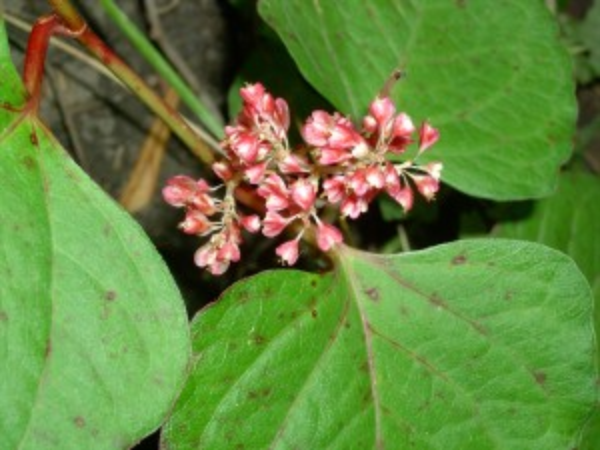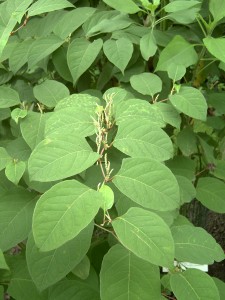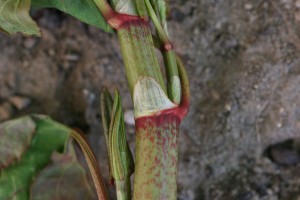
Japanese knotweed – Fallopia japonica
Fallopia japonica
Polygonaceae (Smartweed family)
MI Status
Non-native
Life cycle
Aggressive, clump-forming perennial.
Leaves
Alternate, broadly egg-shaped, sometimes heart-shaped with a squared leaf base.
Stems
Stout, semiwoody, red to brown, hollow and bamboolike, often exceeding 6 to 8 feet in height. Stems are also jointed, forming a zigzag growth pattern.
A membranous sheath (ocrea) surrounds the stem at the base of each petiole. Reddish shoots arise from thick, sturdy and abundant rhizomes.
Flowers and fruit
Flowers are small, white to pink and borne in elongated clusters. The seed is enclosed in a single-seeded, shiny, dark brown to black, three-sided fruit.
Reproduction
Seeds and aggressive rhizomes.
Similar weeds
Giant knotweed
(P. sachalinense F. W. Schmidt)
Differs by having a greater height and heart-shaped leaf base.



Other Documents in this Series
You Might Also Be Interested In
-
MSU named Top 10 agriculture and forestry college in new report
Published on March 23, 2021
-
MSU to study precision livestock farming adoption trends in U.S. swine industry
Published on March 15, 2021
-
MSU research team receives USDA grant to evaluate effectiveness, cost of new blueberry pest management strategies
Published on February 19, 2021
-
Protecting Michigan’s environment and wildlife through the Conservation Reserve Enhancement Program
Published on September 1, 2021
-
MSU animal science professor exploring environmental benefits of regenerative agriculture
Published on February 15, 2021
-
MSU Extension to undertake three-year, $7 million vaccination education effort
Published on August 17, 2021
Accessibility Questions:
For questions about accessibility and/or if you need additional accommodations for a specific document, please send an email to ANR Communications & Marketing at anrcommunications@anr.msu.edu.



 Print
Print Email
Email




